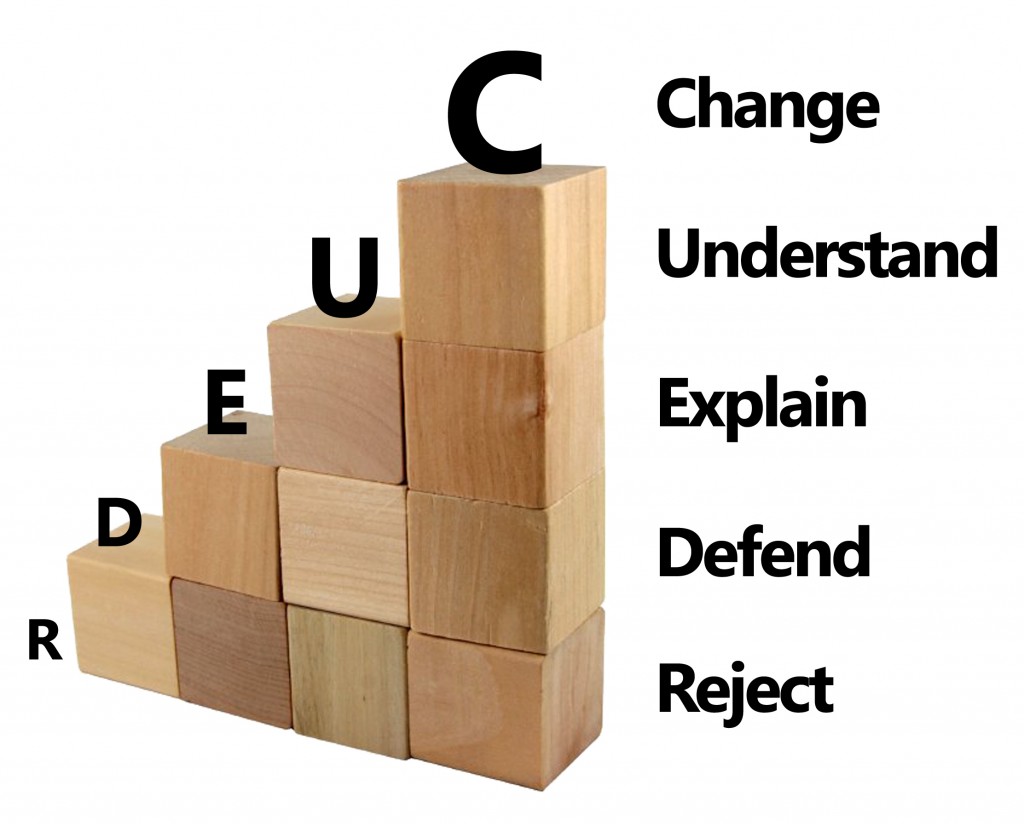We all know how hard it can be take feedback sometimes. You know, when you hear for the 127th time that “you need to twist your wrist more” or “straighten your back leg more” or have a “louder kiai”. Eventually, you just feel like exploding!
Well, what many people don’t know… is that it’s not that easy to give feedback either!
Imagine this: You are in the dojo, minding your business, training Karate one rainy Tuesday evening as usual. “A few people have actually managed to get themselves away from the couch this evening” you think, as you look around the dojo. In the corner of your eye, you see a young yellow belt kid standing in the back, trying to remember his first kata.
But… something is not right.
Oh, he forgot a block, you notice!
So you decide to help the little fellow. You carefully approach him when he is done, and say “Hey, looking good there! Getting ready for the next belt? By the way, I noticed that you forgot a ‘gedan-uke’ after the punch here” and you proceed by showing him the correct way.
“No, I didn’t” the kid replies.
This is when you think: “What did he just say?”
You stand silently and try to think of a snappy comeback that you read on great a blog a few months back. But you forgot them all.
“Yes you did, I saw it thirty seconds ago.” you finally say.
“Well, then you saw wrong. I would like to train alone now if you don’t mind.” the kid says, and gives you that “get lost now”-look.
“Umm… Okay… I guess” you say, and drag your feet back to your corner, trying to figure out what went wrong. You were just trying to help, and now you feel like a total failure! If you couldn’t get through to this kid, how were you ever going to help other people in the dojo?
“What went wrong?”
Well, I’ll tell you what went wrong.
The kid obviously hasn’t heard about the “Feedback Steps”. Apparently, nor have you.
So let me teach you:
The “Feedback Steps” is something I learned a long time ago, as a part of an instructor training course I once attended. I don’t know if the idea even exists anymore. I tried searching the net, but came up with nothing.
Anyway, here I have drawn the steps.

You probably don’t understand much just by watching this picture, and that’s the point. I don’t want to give everything away with one picture!
Let me instead give you an explanation:
When somebody is given feedback (or criticism) they will respond in one of five ways, depending on where they stand on the above Feedback Steps. As you see from the picture, the lowest level is R.
The highest level is C.
What all people should strive for is to climb these steps and eventually reach the peak, C, and (here comes the hard part) – stay there. In other words, don’t slip down to U, or E, or lower.
So what do these letters – R, D, E, U, C – stand for?
I’ll explain, very quickly.
Let’s start from the bottom. Here’s where the scum of the feedback ghetto dwells:
- Feedback Steps Level 1 – Rejection (R)
You probably understand what I will write here just by looking at the heading. The first, and lowest, step on the Feedback Steps stands for Rejection. A person who is at this step will reject everything that is said to him/her. When they are given advice, criticism, feedback, you name it, they will simply reject it with the feeling of “This has nothing to do with me. I repel all feedback. I don’t want any”.
Pray you don’t meet anyone who is at that step.
- Feedback Steps Level 2 – Defend (D)
The person who is at this level will, when confronted with feedback, defend everything – every action… to the bitter end. They don’t simply reject it anymore – no, they don’t ignore you. They start defending themselves! To a person at this step, feedback is a threat. “No, that’s not what I did, that’s not what happened” is their instantaneous answer to every attempt at giving them feedback.
Watch out for the defenders.
- Feedback Steps Level 3 – Explain (E)
Explainers, level 3 of the Feedback Steps, might not only reject you or defend their faults, they will also try to explain why they did wrong, and it will all make perfect logical sense… to them at least. “Yeah, well, I didn’t forget the low block. I just didn’t want to do it, because I think it is an ineffective technique, and besides, it’s boring. And my arm hurts. And I need to pee. And tomorrow is my birthday.” Standing and trying to actively listen to their excus… oops, I mean “explanations” can be really tiresome for somebody just trying to help.
Avoid the explainers.
- Feedback Steps Level 4 – Understand (U)
First of all, don’t let the name of this step fool you. People at the 4th step of the Feedback Steps – understanders – will actually understand your feedback. Yes, that’s right, they will understand what you say. But that’s all. Nothing more. They won’t use what you teach them. They hear and see your feedback very well, but the moment you turn your back, they fall back to their old habits.
When I think about it, I actually encountered one of these the other day! I told him, in a kata sequence, to pull both hands to the left side of his hips, instead of to each side of the hips. “Yes, hai, okay, thank you, thank you very much, I understand” he said.
Two minutes later he seemed to completely have forgotten what I just told him.
But I couldn’t care less.
People who “understand” still lack the final 5th step of the Feedback Steps, which is…
- Feedback Steps Level 5 – Change (C)
Hallelujah! We are finally here. The ultimate goal for a receiver of feedback is made up of six letters: C-H-A-N-G-E! It would not be an overstatement to say that it is fun to teach people who are at the top of the steps. You see a fault, you correct it, and they change! You are not rejected, offended, being explained to, or even ignored anymore. You are listened to and change happens for real!
And why shouldn’t it?
If you have, voluntarily, taken your time to give somebody a bit of your expertize/help/feedback/whatever you call it – then you don’t deserve to be met with anything but change.
At least not in the dojo.
I mean, if you say something to a friend when you are out shopping, he can act how he wants to. You too. It’s not a big deal. You can be as childish as you want to. But if is my belief that in the dojo…
…change should be the only response you should ever expect to get.
And if you get something else (see step 1-4), that person clearly isn’t ready for feedback yet.
Isn’t ready to improve.
Oh, and before you forget, hereare the steps again, with the full word of the step written to the right.

Print and put on the fridge.
Now, before I end this post, I want to ask you something.
What is the shortest word in the English language that contains the letters: a, b, c, d, e, f?
…
Answer: feedback.
Start that climb today.
R, D, E, U… C.
And when you reach the top, stay there. Evaluate yourself, and others, continually. “How did I just respond to that piece of advice? Did I defend myself? Darn, I need to continue climbing those steps!” The more people that understand these steps, the better.
Feedback is the breakfast of champions.
Make it your breakfast too.



3 Comments